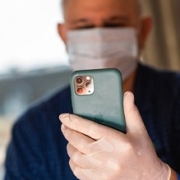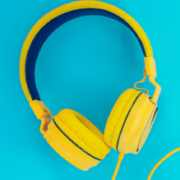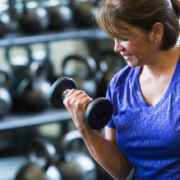In the Time of COVID-19: Hearing Loss and Restaurants
If you are hard of hearing, you have most likely experienced some degree of difficulty when going out to eat at a restaurant. Ambient conversations from other diners, noisy kitchens and background music can create a challenging auditory environment where it is hard to hear and understand your communication partner(s).
Additionally, during the COVID-19 pandemic restaurants have been utilizing their patios for service in order to ensure the safety of their patrons and follow social distancing guidelines. And as the majority of the province prepares to enter Stage 3 of reopening, more and more patios are open for business. The introduction of further background noise from outdoor sources makes it even more difficult for people with hearing loss. So here are some tips and tricks to ease communication in these dining situations!
-
- Put your back to the noise
If you wear hearing aids, their directional microphones are designed to focus on sounds in front of you while reducing sounds behind you. Sit with your back to the majority of the noise so the hearing aid microphones can perform the most effective noise reduction. It is also better if your communication partner has their back to a wall, so they are one of the only sources of sound positioned in front of you.
-
- Avoid peak dining (and traffic) hours
More people (and if you’re on a patio, more traffic) means more background noise. If possible, choose a less busy time of day to go out for your meal.
-
- Booths are Better
If you are dining inside the restaurant, request a booth. They typically have higher backs that can block some of the background sound in the room. Also, the seats usually have padding that can help dampen noise.
-
- Ask for what you need
For example, if the music is too loud, you can tell a staff member that you are hard of hearing and ask if they wouldn’t mind turning the music down while you dine.
-
- Plan your next venue carefully
With some online research, you can discover which restaurants have a better atmosphere for easy conversation. And if you have a smartphone, you can download the SoundPrint app, which is available on iPhone and Android: SoundPrint utilizes a decibel meter to measure the level of sound at the venue, and then submits it into the database for all users to see. (Note: Android does not have the decibel meter function, however you can subjectively rate the volume of the restaurant for the database). SoundPrint has almost 100,000 different entries across Canada and the United States, so there are plenty of places to research and find a quiet spot for your next meal.
These beneficial strategies should help ease your communication while dining out! Enjoy!









 Proudly Canadian and Independently Owned and Operated
Proudly Canadian and Independently Owned and Operated 

